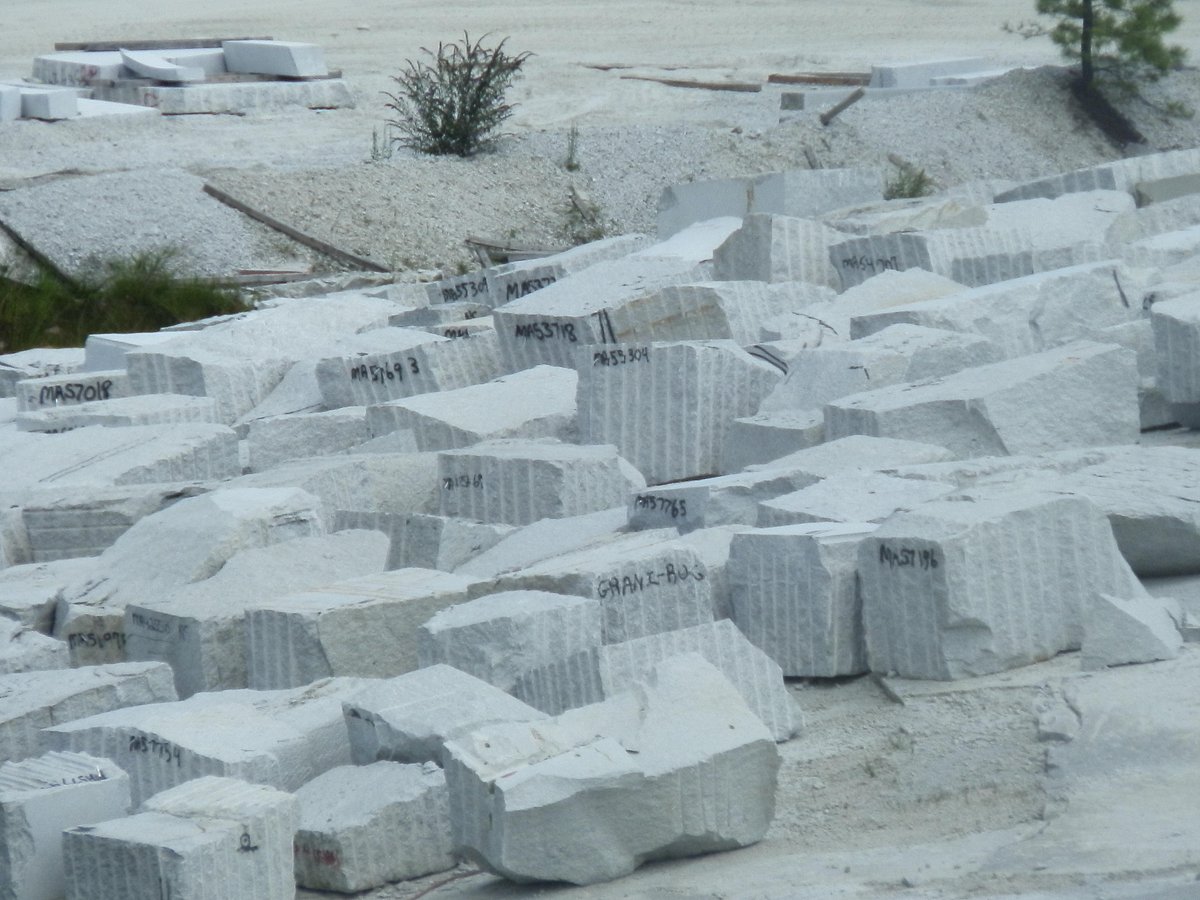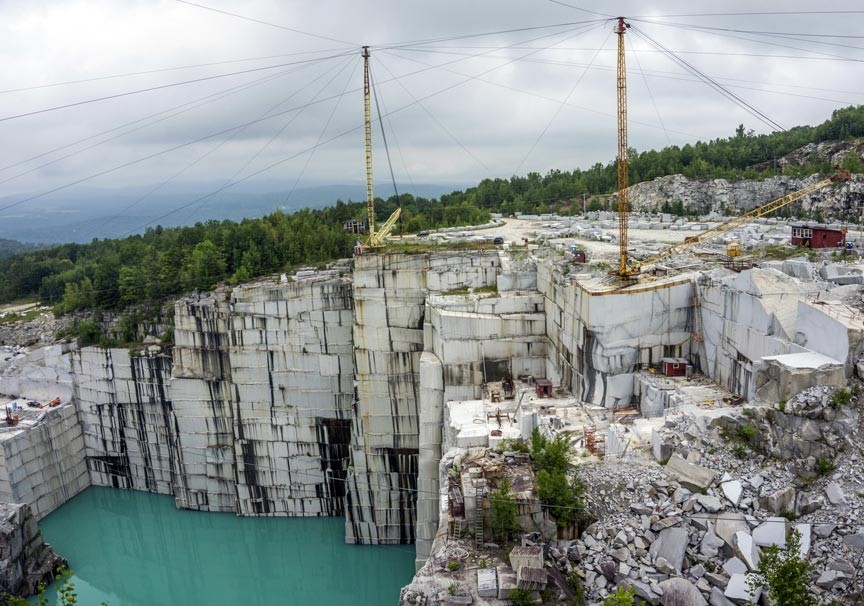Geological Wonders Await: Granite Quarries in Rustenburg
Geological Wonders Await: Granite Quarries in Rustenburg
Blog Article
From Quarry to Kitchen Counter: Comprehending the Refine of Granite Extraction
Granite, a preferred option for countertops because of its resilience and visual charm, undergoes a remarkable journey from the midsts of a quarry to its last location in our bathroom and kitchens. As we explore the complex procedure of granite removal, we will discover the secrets behind the formation of these majestic stone deposits, explore the strategies and devices used in quarrying, and unwind the steps entailed in changing raw granite obstructs into brightened and completed kitchen counters. From the geological origins to the precise craftsmanship, this journey assures to disclose the remarkable tale behind the development of these timeless and useful pieces.
Formation of Granite Deposits
The development of granite down payments is a geologic process that includes the steady cooling and solidification of magma deep within the Earth's crust. Granite, a common kind of igneous rock, is formed when molten lava cools down and solidifies over long periods of time. This procedure takes location under the Earth's surface area, typically at midsts of several kilometers.
These minerals incorporate to give granite its particular structure and look. The slow-moving air conditioning procedure enables for the growth of huge crystals, which offer granite its distinct grainy appearance.
The development of granite down payments is often related to structural activity, such as the accident of continental plates or the ascent of magma from the mantle. The intense warmth and stress produced during these procedures contribute to the melting of rocks and the succeeding formation of lava.
Over numerous years, the solidified granite is revealed at the surface area via erosion and uplift. This is when granite deposits can be quarried and drawn out for various applications, consisting of counter tops, floor covering, and construction materials.

Quarrying Strategies and Equipment
Quarrying methods and tools play a crucial duty in the efficient extraction of granite down payments for various industrial applications. The process involves the use of specialized tools and machinery that guarantee the smooth and safe extraction of granite obstructs from the quarry website.
One of the main techniques utilized in granite quarrying is piercing. As soon as the fees are detonated, the resulting explosion breaks the granite right into convenient blocks.
Along with drilling, cutting and splitting tools are likewise necessary in granite quarrying. Cord saws and high-pressure water jets are frequently used to puncture the granite. These approaches are reliable in dividing the granite right into private blocks, which can then be additional refined.
Packing and transporting devices are crucial in the transport of granite blocks from the quarry to the handling facility. Sturdy vehicles and forklifts are generally used to move the blocks, ensuring their efficient and risk-free transfer.

Extraction and Transportation of Granite Blocks
With the completion of the quarrying techniques and devices the original source section, we now turn our focus to the essential process of delivering and drawing out granite blocks. As soon as the granite has actually been efficiently quarried, it is necessary to extract the blocks from the quarry face. This is usually done making use of hefty machinery, such as excavators or front-end loaders, which are equipped with big blades or rippers to break the blocks free from the bordering rock.
After the blocks have been drawn out, they require to be delivered to the processing center. This is generally done utilizing specialized vehicles or trailers that are capable of lugging the enormous weight of the granite blocks. These transport cars are created to ensure the effective and secure movement of the blocks, with features such as strengthened structures, hydraulic systems, and safe and secure tie-downs.
The continue reading this transport process calls for cautious preparation and control to make sure the blocks reach their location without damages. This involves choosing the suitable paths, considering variables such as road conditions, weight limitations, and the size of the blocks. It is also essential to protect the blocks appropriately during transport to stop shifting or moving, which might cause crashes or damages to the blocks.
Cutting and Forming Granite Slabs
To produce polished and specific granite slabs, a thorough procedure of shaping and cutting is used. When the granite blocks have been removed from the quarry and transferred to the center, they are ready to undertake this important action.
After the first cutting, the pieces are after that shaped to satisfy the desired specifications. This is done using a mix of saws, mills, and polishing devices. The sides of the pieces are smoothed and rounded, giving them a completed and fine-tuned look. The surface of the slabs is likewise polished to achieve a glossy and reflective finish.

Sprucing Up and Completing the Granite Countertops
The final action in the granite extraction procedure includes the precise polishing and ending up of the granite counter tops. After the granite slabs have been cut and formed to the desired measurements, they undertake a series of therapies to improve their look and durability.
The initial stage of the polishing process is called grinding. Throughout this phase, crude ruby abrasives are made use of to remove any imperfections and smooth the surface area of the granite. granite quarries in rustenburg. This process is essential for accomplishing an attire and degree surface
As soon as the grinding is complete, better ruby abrasives are utilized to further fine-tune the surface area of the granite. This draws out the natural charm of the stone and gives it a reflective and glossy look.
After the brightening phase, the granite counter tops are extensively cleaned to get rid of any kind of dirt or particles. This is followed by the application of a sealer, which aids safeguard the stone from scrapes and stains.
Final Thought
In conclusion, the process of granite removal involves different phases, consisting of quarrying, extraction, transportation, reducing, forming, brightening, and ending up. Granite deposits are formed over millions of years via geological procedures.
As we dive right into the complex procedure of granite extraction, we will reveal the secrets behind the formation of these impressive rock down payments, explore the strategies and tools utilized in quarrying, and unwind the steps entailed in changing raw granite obstructs right into brightened and ended up countertops (granite quarries in rustenburg). These approaches are efficient in separating the granite into individual blocks, which can then be additional processed
With the completion of the quarrying strategies and tools section, we currently transform our interest to the critical process of delivering and drawing out granite blocks.To produce sleek and accurate granite slabs, a meticulous process of shaping and reducing is used.In verdict, the process of granite removal entails different phases, including quarrying, removal, transport, cutting, shaping, brightening, and finishing.
Report this page